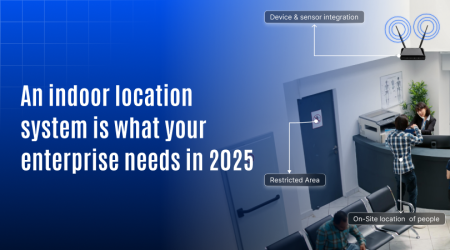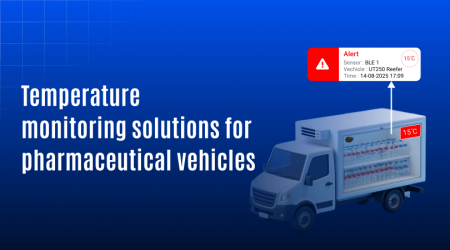What makes fleet tracking essential for delivery in New York
Managing urban deliveries in New York is a constant challenge. With over 2 million deliveries taking place each day across the five boroughs, fleet operators must handle tight delivery windows, unpredictable traffic, limited parking, and strict curbside access rules. Fleet tracking in New Yorlk is crucial to overcoming these challenges efficiently.
Data from the NYC Department of Transportation shows that commercial vehicles account for nearly 10 percent of all traffic in the city. This leads to frequent congestion, increased operating costs, and pressure on delivery schedules. In a city where minutes matter, even small delays can lead to missed time slots, penalties, and unhappy customers. Therefore, fleet tracking systems help businesses meet their delivery goals effectively in New York.
Fleet tracking systems help delivery businesses stay on top of these challenges. They offer real-time visibility, route adjustments, and better control over vehicle and driver performance. For fleets operating in New York, this kind of smart tracking is no longer optional. It is a necessary tool to keep operations efficient and competitive, making fleet tracking in New Yorlk indispensable.
Urban delivery challenges faced by fleets in New York
Delivering goods in New York is not just about reaching the destination. It is about navigating a complex environment where every block presents a new hurdle. Fleet operators face challenges that are specific to this dense and fast-paced city, especially when it comes to fleet tracking in New Yorlk.
- Congested streets slow down deliveries
New York remains one of the busiest and most traffic-heavy cities in the country. This affects delivery timelines, increases fuel consumption, and adds stress to drivers working under pressure. - Limited parking access
Finding space to stop and unload is a daily struggle. Double parking fines and complaints from residents often add to the operational cost for fleets. - Strict delivery time windows
Many commercial buildings, especially in Manhattan, have specific loading hours. Missing these windows can lead to rescheduled trips or lost business. Fleet tracking in New Yorlk assists in managing these schedules effectively. - Unpredictable traffic and roadblocks
Whether it is a sudden construction zone or a blocked street due to an event, real-time traffic disruptions make route planning extremely difficult without constant monitoring, which makes fleet tracking in New Yorlk vital. - High operating costs and customer expectations
In a city where same-day or two-hour deliveries are the norm, efficiency is key. Rising fuel prices, vehicle wear, and demand for speed make it hard to stay profitable without the right tools.
How fleet tracking helps overcome these delivery challenges
Fleet tracking systems give delivery operators the control and visibility they need to perform better in a city like New York. These tools do more than just show vehicle locations. They address the daily delivery challenges that urban fleets encounter.
- Real-time route updates reduce delay risks
Modern tracking systems reroute vehicles dynamically by analyzing live traffic updates. This helps drivers avoid bottlenecks and reach their destinations faster. - Geofencing improves curbside compliance
Fleets can set location-based rules that notify drivers when they approach or leave designated delivery areas. This helps with parking management and avoids violations. - Timely alerts support better driver decisions
Instant alerts for speeding, idling, or long stops help drivers stay focused and avoid fines. This also ensures deliveries are completed within the assigned time windows. - Web and mobile access keep teams connected
Managers can track, schedule, and communicate with their teams remotely. Whether at the office or in the field, they have a full view of fleet activity. - Route history and analytics drive improvements
Fleet tracking software keeps a record of past trips, especially in New York City. Managers use this data to identify delays, shorten routes, and improve delivery planning over time.
Results fleet operators are seeing in New York
Fleets that have adopted tracking technology in New York are already seeing practical benefits that go beyond simple navigation.
- Faster deliveries despite city congestion
With smarter routing, delivery times have improved even during peak hours. - Fewer parking fines and compliance issues
Geofencing and delivery zone planning help avoid unnecessary penalties. - Higher customer satisfaction
Real-time updates and timely arrivals build trust and reliability with clients. - More efficient allocation of driver hours and vehicle usage
Fleet data shows where delays happen most, so companies can optimize schedules and reduce idle time.
Conclusion
In a city as fast-moving and complex as New York, delivery operations need more than skilled drivers and good vehicles. They need visibility, control, and reliable data. Fleet tracking brings all of this together. It helps operators adapt to city-specific challenges, improve service, and keep operations running smoothly. Fleet tracking in New Yorlk is now essential for staying competitive in dense urban environments like New York.


